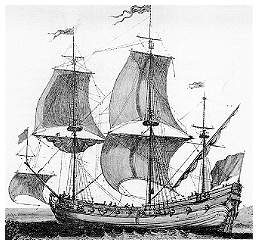
| 1720 - The Great Plague |
 |
Saturdays May 25, 1720, the Large Saint-Anthony arrived at Pomègues, small island of the archipelago of the Friuli, in the roads of Marseilles, at the end of a ten months and three days navigation to the Mediterranean. It brought an invaluable fabric loading partly intended for the next fairs of Beaucaire, which belonged to several notable of the city |
